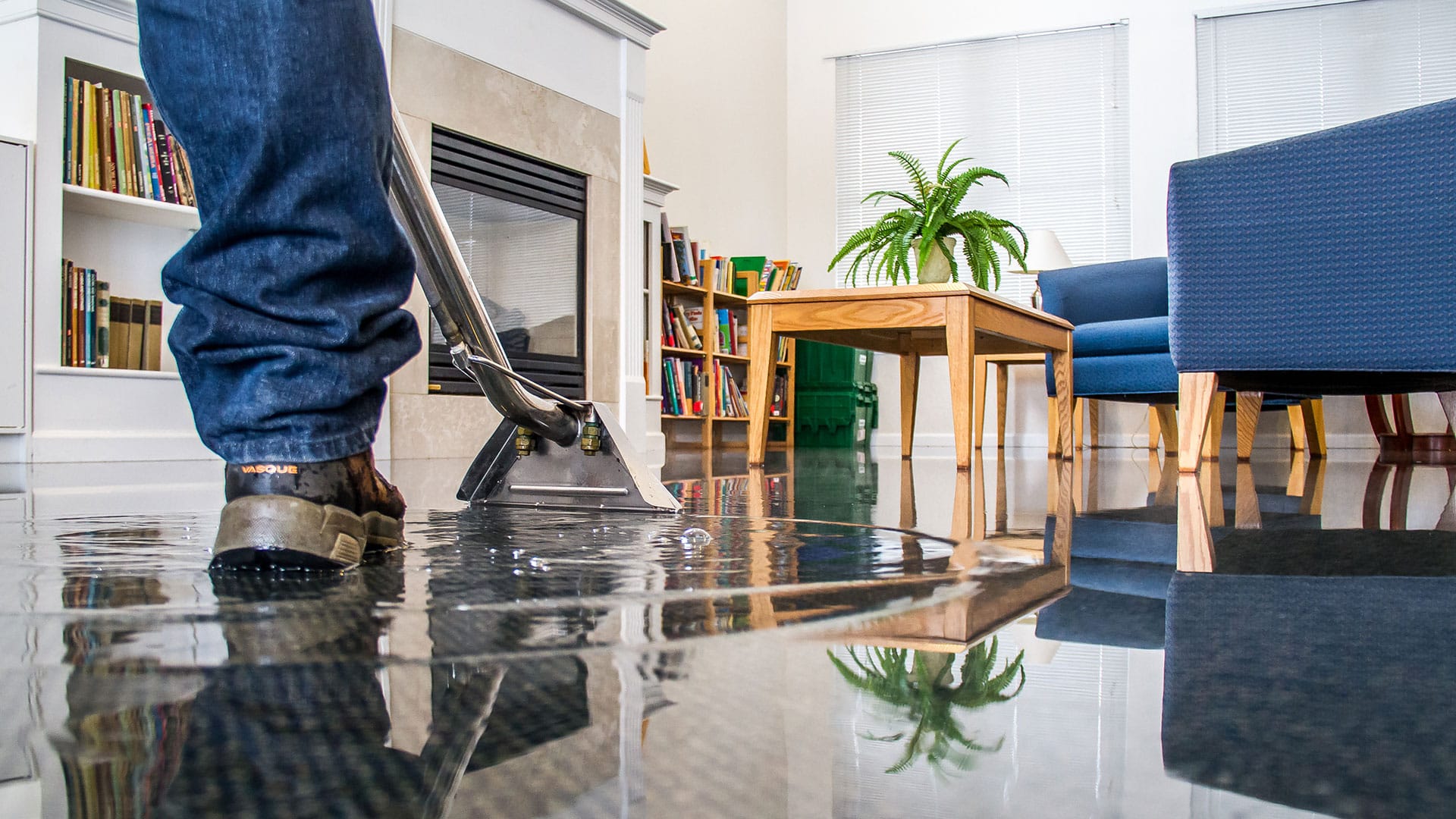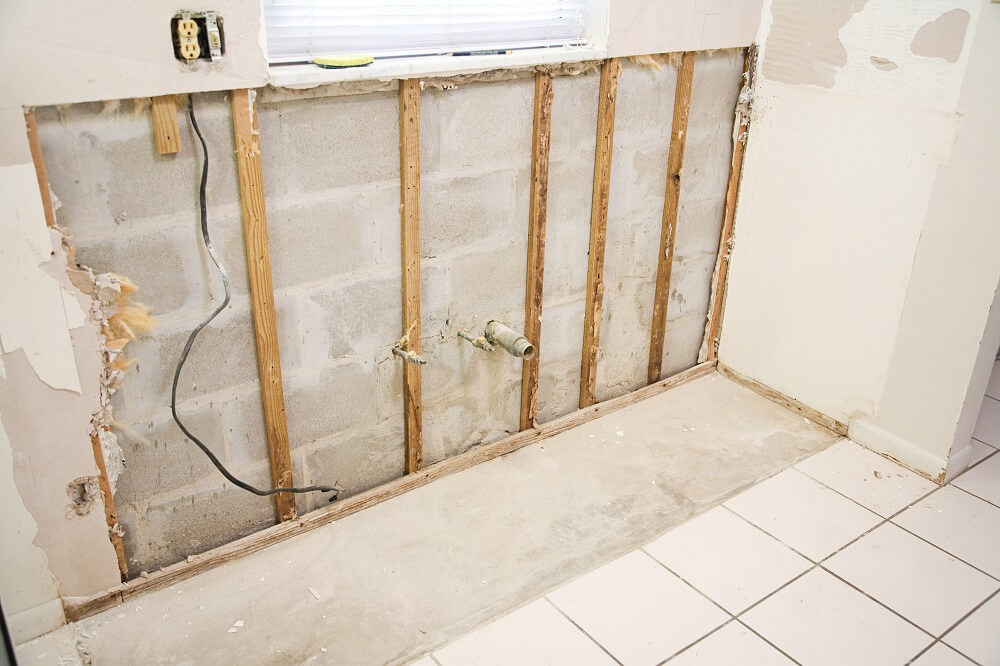Leading Water Mitigation Company Offering Fast and Efficient Solutions
Leading Water Mitigation Company Offering Fast and Efficient Solutions
Blog Article
The Process of Water Damage Cleaning: Ensuring Your Home Is Restored Properly
Water damage can be a difficult challenge for house owners, requiring a precise and organized cleanup procedure to restore security and functionality. At first, a comprehensive analysis is crucial to recognize the degree of the damages and identify the proper remediation actions. Following this, efficient water removal methods play a critical function in mitigating additional injury. The nuances of drying, sterilizing, and ultimate remediation are just as essential and typically ignored. Recognizing these phases can make a significant difference in the outcome of your home's remediation, triggering a closer take a look at what each step involves.
Evaluating the Damage
Upon discovering water damages, the very first step is to completely evaluate the extent of the impact. This first analysis is critical, as it aids figure out the needed actions for effective cleanup and remediation. Begin by evaluating the influenced areas, consisting of wall surfaces, ceilings, floors, and individual valuables, to identify the resource of the water breach, whether from flooding, leakages, or condensation.
Documenting the damage is vital for both insurance policy cases and planning restoration efforts - damage restoration services. Use photographs and written notes to capture the extent of the damages, noting any afflicted architectural components and materials. Pay unique interest to areas that might not be immediately visible, such as behind walls and under carpets, as concealed moisture can result in additional problems, including mold growth
Furthermore, assess the timeline of the water exposure. Ultimately, a comprehensive analysis lays the groundwork for a successful water damages cleaning procedure, making certain that all impacted areas are dealt with efficiently and extensively.
Water Extraction Methods

Professionals generally employ completely submersible pumps for larger volumes of water, which can rapidly reduce flooding in basements or other influenced areas. For smaller sized amounts, wet/dry vacuums are usually utilized to remove recurring moisture from rugs and difficult surfaces. In addition, utilizing mobile extractors permits for targeted elimination in confined rooms or locations with fragile products.
In circumstances of polluted water, such as sewer or floodwater, advanced removal methods might include making use of biohazard tools to ensure safety and security and compliance with wellness laws. High-powered extraction tools are critical in minimizing water retention in structural materials, which can cause mold development and architectural deterioration otherwise dealt with without delay.
Ultimately, the efficiency of water removal methods plays an essential function in the overall success of the water damage cleaning process, preparing for subsequent restoration initiatives.
Drying and Dehumidification
Once standing water has actually been successfully drawn out, the following critical phase in the water damages clean-up procedure is drying and dehumidification. This action is essential to protect against more damage and mold growth, which can take place within 24 to Going Here 2 days in moist atmospheres.
To accomplish effective drying out, customized devices such as industrial-grade air moving companies and dehumidifiers is employed. Air moving companies flow air throughout wet surface areas, enhancing evaporation prices, while dehumidifiers lower humidity levels in the air, promoting a favorable environment for drying out. The combination of these tools guarantees that moisture is drawn out from floors, wall surfaces, and home furnishings, allowing them to dry extensively.
It is essential to keep an eye on the drying out procedure closely. Professionals usually use moisture meters to evaluate the wetness material in numerous products, ensuring that all affected areas reach acceptable dryness levels. This precise method assists to avoid surprise dampness pockets that can bring about architectural damages or undesirable mold and mildew development.

Cleansing and Sterilizing
After the drying and dehumidification stage is full, the following important action in water damage cleaning is cleansing and sterilizing the impacted areas. This procedure is crucial to prevent the development of mold and mildew, germs, and other pathogens that grow in wet atmospheres.
The cleaning stage normally includes removing any kind of particles, dirt, and contaminants from surface areas making use of specialized cleaning agents. For tough surface areas, a combination of soap and water or business cleansing products is usually used. Soft materials, such as furniture and carpetings, may call for extra extensive cleansing techniques, including heavy steam cleaning or deep removal methods, to guarantee comprehensive sanitation.

Disinfecting follows cleansing, making use of EPA-approved anti-bacterials to eliminate harmful microbes. This step is essential, especially in areas see that might have entered contact with floodwaters or sewer, as these sources can pose significant health and wellness dangers.
In addition, it is essential to resolve any continuing to be odors, which might call for using odor neutralizers or advanced methods like ozone treatment. Correct cleaning and sterilizing not only bring back the safety and health of your home but also lay the foundation for effective repair and repairs in succeeding stages of the water damage clean-up process.
Restoration and Repairs

Once the assessment is total, restoration efforts can begin. In addition, floor covering might need similar attention, depending on the degree of water exposure.
It is vital to involve skilled restoration professionals throughout this process, as they possess the expertise to handle complicated fixings properly. They can aid reduce potential future issues, such as mold development or structural instability, hence guaranteeing a habitable and safe living atmosphere. Ultimately, reliable reconstruction and repair work recover the home's integrity and improve its total value.
Verdict
To conclude, the process of water damage cleaning is important for recovering a home to its pre-damage problem. Each stage, from analyzing the damage to executing effective water extraction techniques, adhered to by complete drying, disinfecting, and necessary repair services, plays an essential function in making certain safety and conformity with building standards. Reliable execution of these actions not only alleviates prompt damage but likewise boosts the lasting honesty and worth of the home.
Water damages can be a challenging challenge for home owners, requiring a structured and precise clean-up procedure to recover security and capability. Ultimately, an extensive evaluation lays the foundation for an effective water damage cleanup process, making certain that all influenced areas are resolved properly and completely.
Effective water removal methods are crucial in mitigating damages and avoiding more issues complying with a water breach event.In final thought, the process of water damage clean-up is important for bring back a home to its pre-damage condition. Each stage, from examining the damage to executing reliable water extraction techniques, adhered to by detailed drying, sanitizing, and essential repairs, plays a crucial duty in making sure safety and security and compliance with structure standards.
Report this page